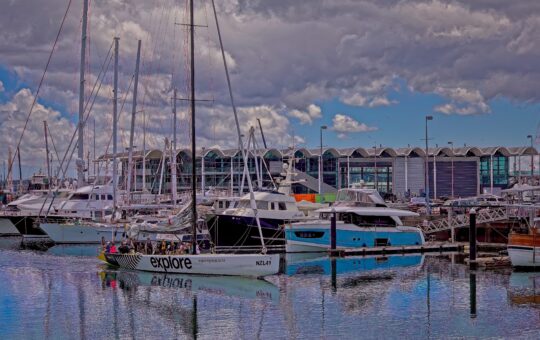US equities had another week of positive performance closing the week ~0.7% higher than last week's close. However, again, it was not a smooth ride with major gains coming on a ~1% gap up on Friday: We are still sitting near the top boundary … [Read More...]
Rutherford Portfolio Review (Tranche 1): 3 May 2024
US equities had another week of positive performance closing the week ~0.7% higher than last week's close. However, again, it was not a smooth ride with major gains coming on a ~1% gap up on Friday: We are still sitting near the top boundary … [Read more]
“Sell In May And Go Away”
"The exact provenance of the saying 'Sell in May and go way, don't come back until St Leger's Day' is unclear but a consensus has formed around the idea that it emerged due to stock market traders … [Read more]
Copernicus Portfolio Review: 1 May 2024
Copernicus is an example portfolio designed for young folks who have little or no time to manage an investment portfolio. All that is required is to open up a broker account, set up monthly deposits, and then log in and purchase shares in one or … [Read more]
Two Quarter Rotations of Sector BPI Performance: 29 April 2024
The purpose of this blog is to examine in more detail the performance of the eleven (11) Sector BPI portfolios by looking at performance over two quarter periods. Beginning at the end of the second quarter of 2022 and ending on the first quarter of … [Read more]
Rutherford Portfolio Review (Tranche 4): 26 April 2024
Although US equities closed up ~2.5% from last week's close it was not a smooth ride - with a bounce from last week's close early in the week to a retest of the ~5000 support level on Thursday and a jump back up on … [Read more]
Bullish Percent Indicators: 26 April 2024
Updating the Bullish Percent Indicator data is important this week as there are a few changes in the sector arena. Technology dipped into the oversold zone this week, but rebounded and is no longer recommended for purchase. I hope readers checked … [Read more]
Rutherford Portfolio Review (Tranche 3): 19 April 2024
It was another bad week for US Equities with indices down ~3% on the week and now down over 5.5% from the highs at the beginning of the month. It may be a little early to be drawing … [Read more]
Darwin Portfolio Review: 12 April, 2024
The Darwin Portfolio is an "All-Weather" portfolio of five ETFs representing the major asset classes of US Equities (VTI), International Equities (VSS), US Real Estate (VNQ), US Treasuries (TLT) and Gold (GLD). For additional diversity a 10% … [Read more]
- 1
- 2
- 3
- …
- 53
- Next Page »

